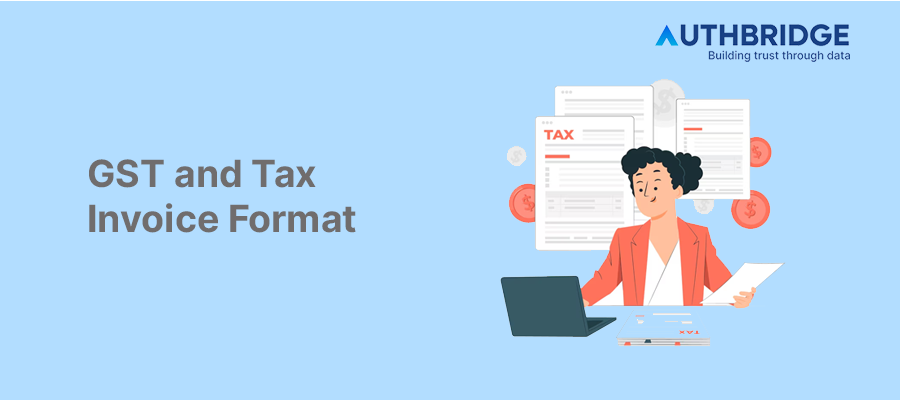Everything You Need To Know About GST Invoices: A Complete Guide

A GST Invoice is a critical document for both buyers and sellers in the GST regime, acting as a comprehensive list of goods or services provided along with the payment due. This document is not just a request for payment but serves multiple functions including compliance with tax laws, enabling the buyer to claim input tax credit, and serving as proof of service or product delivery.
Importance Of GST Invoice For Businesses
For businesses, the GST invoice is not just a piece of paper but a testament to their compliance with Indian tax laws. It facilitates the smooth flow of input tax credit across the supply chain, enhancing operational efficiency. Moreover, maintaining proper GST invoices helps in accurate financial reporting and tax filing, reducing the risks of tax evasion penalties.
Who Should Issue A GST Invoice?
GST-registered businesses are mandated to issue GST-compliant invoices for all transactions. These invoices are crucial for both the seller and the buyer, facilitating the claim of input tax credit and ensuring compliance with GST regulations. Non-compliance or inaccuracies in invoicing can lead to penalties and disruptions in the tax credit chain.
Mandatory Fields In A GST Invoice
A GST Invoice must encompass specific mandatory fields to be considered compliant. These include:
- Invoice number and date: For tracking and reference.
- Customer name: Essential for identifying the buyer.
- Shipping and billing address: To specify the delivery and billing locations.
- Customer and taxpayer’s GSTIN: Required for GST compliance.
- Place of supply and HSN/SAC codes: Critical for tax calculations.
- Item details: Including description, quantity, unit, and total value.
- Taxable value and discounts: To calculate the net payable amount.
- Rate and amount of taxes: Detailed as CGST/SGST/IGST.
- Reverse charge applicability: If applicable, it must be mentioned.
- Supplier’s signature: For authentication.
Notably, for transactions above Rs. 50,000 to unregistered recipients, additional details such as the recipient's name, address, and delivery location are required.
Personalization And Types Of GST Invoices
Personalizing GST Invoices: Businesses can enhance their GST invoices by incorporating company logos and branding, utilizing platforms like ClearTax BillBook for creating personalized and compliant invoices at no cost.
Types of GST Invoices:
- Bill of Supply: Issued when GST cannot be charged.
- Invoice-cum-Bill of Supply: For combined taxable and exempt supplies to unregistered persons.
- Aggregate Invoice: For multiple small-value supplies.
- Reverse Charge Invoice: Issued by the recipient when tax is payable on a reverse charge basis.
- Debit and Credit Notes: For adjustments in invoiced amounts.
GST Invoice Formats: Excel, Word, and PDF
Creating compliant and professional GST invoices is crucial for business operations. Let's explore the formats and methods to create GST invoices in Excel, Word, and PDF.
Creating GST Invoices in Excel:
Excel is a versatile tool for generating detailed and customizable invoices. The process involves setting up a template with all required fields, including company and customer details, transaction specifics, and tax calculations. Excel's functionalities allow for automatic calculations and data management, making it a preferred choice for many businesses.
Creating GST Invoices in Word:
Word provides a simpler, text-oriented format for creating invoices. It's suitable for businesses that require basic invoices without complex calculations. The template creation involves inserting tables and filling out necessary details like business information, customer details, and item descriptions.
Creating GST Invoices in PDF:
PDF invoices offer a secure and professional way to send bills to clients. They can be created using Excel, Word, or dedicated invoicing software and then converted to PDF. This format ensures the invoice remains unchanged once issued, providing a reliable document for both parties.
Compliance and Mistakes to Avoid
Compliance Requirements:
Issuing a compliant GST invoice is non-negotiable for registered businesses. Essential elements include accurate business and customer details, a unique invoice number, detailed item descriptions, and correct tax calculations. Ensuring compliance not only facilitates smooth input tax credit claims but also avoids legal penalties.
Mistakes to Avoid in Tax Invoicing:
Common mistakes include incorrect GSTINs, missing mandatory fields, wrong tax calculations, and failure to issue invoices within the prescribed time frame. Such errors can disrupt the input tax credit chain and lead to compliance issues. Regular audits and checks are advisable to maintain accuracy and adherence to GST invoicing standards.
Conclusion
Understanding and implementing the correct GST invoice practices are essential for all GST-registered businesses. It not only ensures compliance with the law but also streamlines the process of claiming input tax credit, thereby maintaining the smooth functioning of the business's financial operations. By adhering to the guidelines and making use of the available formats and tools for creating GST invoices, businesses can avoid common pitfalls and maintain a healthy compliance record.
Meta- Essential elements of GST-compliant tax invoice format for businesses
Category

Abhinandan Banerjee
(Associate Manager - Marketing)
Abhinandan is a dynamic Product and Content Marketer, boasting over seven years of experience in crafting impactful marketing strategies across diverse environments. Known for his strategic insights, he propels digital growth and boosts brand visibility by transforming complex ideas into compelling content that inspires action.



